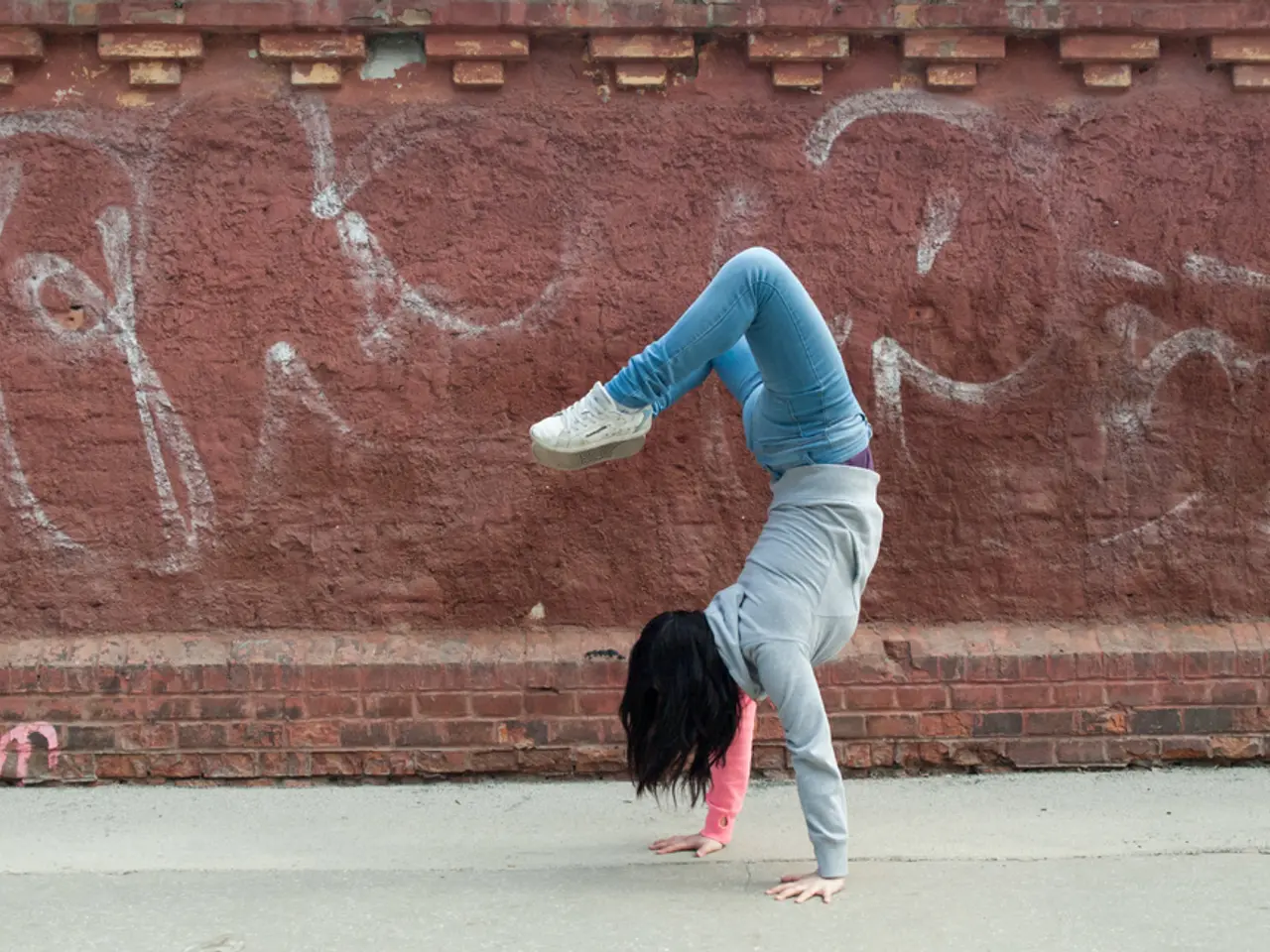Abdominal Separation (Diastasis recti) and Its Resolution Methods: Workouts and Solutions
Postpartum diastasis recti, a separation of the abdominal muscles, can be a common concern for new mothers. Here's what you need to know about this condition, its causes, and potential treatments.
Diastasis recti is characterized by a widening of the linea alba, the band of tissue that divides the two long muscles called rectus abdominis, causing them to separate. This separation can be visible as a midline bulge down the abdomen.
In many cases, diastasis recti heals on its own without treatment. However, for those experiencing discomfort, pain, or other symptoms such as loss of bladder control, musculoskeletal problems, pelvic organ prolapse, poor self-image, and lower quality of life, there are several options available.
Conservative treatment options include weight loss, lifestyle modifications, and physical therapy exercises. A 12-week exercise program, including diaphragmatic and core strengthening exercises, can decrease the severity of diastasis recti. Exercises that strengthen the abdominal and pelvic floor muscles may help prevent diastasis recti.
However, it's important to note that there is insufficient evidence to determine the best exercises for diastasis recti through physical therapy. Effective exercises for healing diastasis recti in the postpartum period primarily focus on strengthening the deep core muscles, especially the transversus abdominis and pelvic floor muscles, while avoiding movements that strain or overly activate the superficial rectus abdominis (e.g., traditional crunches or planks).
Core strengthening can be enhanced through biofeedback techniques like mTrigger, kinesiotaping, and surface electromyography (sEMG) to ensure proper muscle engagement. Recommended exercises typically include transversus abdominis activation, pelvic floor exercises, modified core strengthening, postnatal Pilates, and specialized core workouts designed to safely rebuild abdominal strength and flatten the postpartum tummy while respecting diastasis recti healing.
In some cases, surgery may be necessary. Open surgery, laparoscopy, and robotic surgery are surgical options for diastasis recti. Surgery is generally not recommended for those who expect to have future pregnancies due to potential complications.
It's crucial to consult a healthcare professional for a proper diagnosis. Doctors can diagnose diastasis recti by taking a thorough medical history and carrying out a physical examination. In approximately cases, the condition persists after the early postpartum period, making surgery a viable option.
In summary, the best approach for postpartum diastasis recti recovery is a progressive core strengthening regimen targeting deep abdominal and pelvic floor muscles, often supported by biofeedback tools or kinesiotape for optimal muscle activation and healing. Conservative treatment options should be considered first, but surgery may be necessary in some cases. Always consult a healthcare professional for personalised advice and treatment.
[1] Biofeedback Techniques for Diastasis Recti Healing [2] Exercise Videos for Postpartum Diastasis Recti Recovery [3] Safe Core Exercises for Diastasis Recti [4] Postnatal Pilates and Specialized Core Workouts for Diastasis Recti [5] Understanding Diastasis Recti and Its Impact on Abdominal Recovery After Pregnancy
- The progression of core strengthening exercises, including transversus abdominis activation, pelvic floor exercises, and postnatal Pilates, can be aided by biofeedback techniques such as mTrigger, kinesiotaping, and surface electromyography (sEMG) to ensure proper muscle engagement in the healing process of diastasis recti.
- Surgery may be considered for cases where diastasis recti persists after the early postpartum period, with open surgery, laparoscopy, and robotic surgery being possible options, but it's essential to consult a healthcare professional for a personalized treatment plan, as surgery is generally not recommended for those who plan to have future pregnancies due to potential complications.
- For new mothers experiencing discomfort, pain, or other symptoms such as loss of bladder control, musculoskeletal problems, pelvic organ prolapse, poor self-image, and lower quality of life due to diastasis recti, fitness-and-exercise routines focused on strengthening deep core muscles (like science-backed exercises from the health-and-wellness field) and the pelvic floor might alleviate these issues and improve overall well-being. This could involve guided exercise videos found for postpartum diastasis recti recovery or specialized workouts designed specifically for this purpose.




